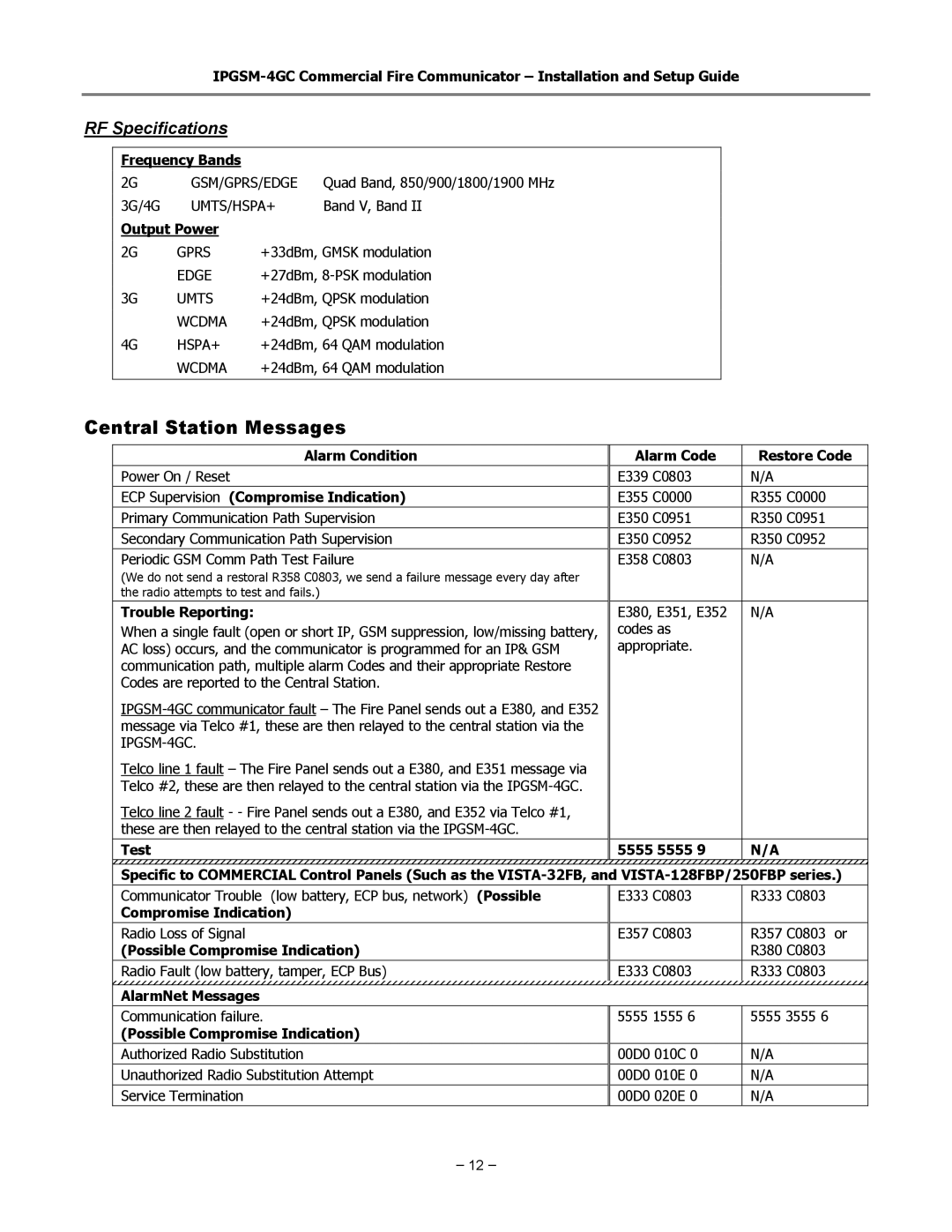IPGSM-4GC specifications
The Honeywell IPGSM-4GC is an advanced cellular communicator designed for security applications, providing reliable communication for alarm systems. This device enhances the ability of security systems to transmit signals to monitoring centers, ensuring that alarms are promptly addressed. With the increasing reliance on cellular technology, the IPGSM-4GC stands out as an essential tool for both residential and commercial security solutions.One of the main features of the IPGSM-4GC is its dual-path communication capability. It can transmit signals via both Ethernet and cellular networks, providing redundancy that enhances reliability. In the event of an internet outage, the device seamlessly switches to cellular communication, ensuring that the alarm system remains operational at all times. This dual-path feature is particularly valuable in critical security applications where continuous communication is necessary.
The IPGSM-4GC also supports 4G LTE technology, which offers faster response times and improved signal quality compared to previous generation communicators. This technology enables the device to communicate with monitoring stations more efficiently, ensuring that alarm signals are sent and received quickly. Additionally, with 4G LTE being the current standard, the IPGSM-4GC is designed to remain relevant as older technologies are phased out.
Security is further enhanced by the robust encryption protocols employed by the IPGSM-4GC. The device uses advanced AES encryption, protecting sensitive data transmitted over cellular networks from potential interception or unauthorized access. This feature is crucial for users looking to maintain a high level of security in their alarm systems.
Installation and integration of the IPGSM-4GC are simplified thanks to its compatibility with a wide range of Honeywell alarm panels. The device utilizes a straightforward setup process, making it accessible for both professional installers and DIY enthusiasts. The modular design allows for easy updates and maintenance, ensuring longevity in performance.
In summary, the Honeywell IPGSM-4GC is a cutting-edge solution that combines dual-path communication, 4G LTE technology, and advanced encryption to provide a reliable and secure cellular communication option for alarm systems. With its ease of installation and compatibility with various Honeywell panels, it serves as a vital component for modern security solutions, meeting the demands of today’s connected world.

